Read part one of the Sheffield tram-train feature.
The first weekend I travelled to Sheffield (in October 1995, house hunting ahead of a new job), the city was in the middle of a celebration. Not (I hasten to add) for my imminent arrival, but for a much better reason. A full ten years since Parliament had signed off on the project, the last part of the Supertram network opened for business. Everyone was given three days’ free travel.
Hard to believe that was 20 years ago now. However, it’s even longer since the trams first returned to the city. It was back in March 1994 when passengers first boarded the grey-liveried Dusseldorf-built vehicles - the second revived tram network to open in the UK.
Sheffield had been the last English city to bid farewell to its traditional tram network - crowds had filled the streets on a dreadfully wet night in October 1960, and the event was even captured in a glorious BBC Children’s Unit newsreel. But some 34 years later, when they returned, the love affair took time to rekindle.
Rebuilding a largely ‘on street’ tram system had, not unnaturally, led to a good deal of disruption. Smaller businesses blamed lengthy road closures for robbing them of custom and forcing them to the wall.
And when the first part of the network opened it ran between the city centre and Meadowhall - this was just three years after the shopping complex opened, an event that had itself sparked a debate about taking life out of Sheffield’s High Street. Moreover, until ‘tram gates’ were installed at key junctions, traffic would often hold up the service.
However, ridership was the real worry. It had been thought that in excess of 20 million people would use it annually, but in the early days many trams rolled through the streets empty.
Various things were blamed. A complex ticketing system whereby passengers had to validate cards before boarding was just one of the reasons given (the cards had often been bought just moments before, from a separate machine).
Initially, the system was operated by a subsidiary company of the South Yorkshire Passenger Transport Executive. The four South Yorkshire councils had borrowed money towards the £240 million construction costs, but this meant taxpayers in Rotherham, Barnsley and Doncaster faced having to pay for the debt even though the system went nowhere near them. (Despite this, the official title of the network was a no doubt galling ‘South Yorkshire’ Supertram!)
Leafing through a file I’ve kept for posterity reveals a copy of a fax from early 1996. The councils had had enough, and called in consultants whose brief was “an urgent and considerable rethink about management and operation…” The document concluded that a plan needed to be identified for “a commercially profitable operation”.
Two years after opening, adverts appeared for the privatisation of the system - either as a franchise of the operation, or lock stock and barrel including assets. Stagecoach eventually took on the operation in 1997, with a licence that runs until 2024.
At that time ridership was pushing eight million people every year, which has now climbed to 12 million. That’s slightly (and understandably) down from a peak of more than 14 million a couple of years ago - this has been put down to the disruption caused by an extensive rail replacement programme.
The network consists of three lines, covering a little over 18 miles. One (as previously mentioned) connects the city centre to Meadowhall via Attercliffe. The old British Rail stations at Attercliffe and Brightside were closed as the trams and the new Meadowhall Interchange station opened.
The other lines are an altogether more complex proposition, snaking from Middlewood roughly southeast via the city centre towards Halfway. Some of this route is on street, some on new formation. Two short branches head to Malin Bridge and Herdings Park. The three existing passenger routes (Yellow, Blue and Purple) operate across the network to connect all these destinations.
The original Siemens Duewag-built vehicles are still in use, with 25 in the fleet. Usually 23 are required to run the service, with two in maintenance at the depot close to Nunnery Square stop. They can cope with maximum gradients of 10%, with the lines having steep climbs in places.
Over the years, there have been repairs and refurbishments to trams, changes to route patterns, and conductors have been introduced on board. The awkward ticketing is gone, and today you’ll often see services rolling past full, testament to how Sheffield has once again taken trams to heart.
“It’s a cherished part of Sheffield, people regard it as their tram system,” says Sheffield Supertram Deputy Managing Director Tim Bilby.
“We start early in the morning with 23 out of 25 trams running, it’s up to a ten-minute frequency over three routes, and it runs through to around midnight. The challenges are usually traffic in places where we run in conjunction with lorries and cars. We can’t drive round obstructions… most of the time it’s a very punctual service.”
Previously, there have been plans to extend the network. In the first years of the millennium, proposals were outlined to reach the Royal Hallamshire Hospital, the affluent southwest suburb of Dore, and also Rotherham, but they failed to qualify for funding.
Finally, though, it is set to expand and break out of its Sheffield stronghold, truly earning its original ‘South Yorkshire’ epithet. Tram-train is finally (well, almost) upon the UK.
But while it has been in use for some time on the continent, having initially been developed in the German town of Karlsruhe, it is untested technology here. The notion is simple enough. Combine the best of on-street city centre commuting with the advantage of higher-speed, longer-distance travel found on inter-urban lines.
In 2008, it was suggested South Yorkshire could lead a pilot scheme on the Penistone line, although as this would not have had a physical connection to the tram network it would have merely been a test of the vehicles. That changed in 2013, with a more integrated and funded scheme on the table, and a contract was signed to build seven new tram-trains. The first of these, built at Vossloh’s Valencia plant (RAIL 788), arrived in the UK at the end of November.
As Steve Davenport, principal secretary and solicitor of the South Yorkshire Passenger Transport Executive, says: “Tram-train takes existing technology and adapts it. It is exciting nationally and locally. This is the first trial... hopefully it will allow the system to be used elsewhere in the UK. It is a multi million-pound investment in South Yorkshire, creating 35 new jobs with Stagecoach as conductors and drivers, and local construction jobs while infrastructure work is under way.
Just before the Meadowhall terminus of Supertram’s Yellow Line, the track runs close to a heavy rail line that currently carries occasional freight services. A connection between the two networks will be made here, and the freight line electrified to 750V DC (the pilot will use future-proofed dual-voltage vehicles capable of running at 750V DC and ‘main line standard’ 25KV AC). Improvements are also required at Woodburn signalbox, which will control the connection. Once the tram-trains are on the freight line they’ll run east under the Tinsley motorway viaduct towards Rotherham Central station, where the traditional heavy rail platforms will need a low-level extension for the tram-train vehicles. From here the service will continue, now mixing with local stopping heavy rail trains. Again, this line needs to be electrified.
After a couple of kilometres it will reach Parkgate, a popular out-of-town retail district that is not currently served by either trams or trains. Here, a new short spur will run to a dedicated low-level platform where the tram-train service will terminate and reverse - thus any standing will be done off the main line.
So in future, you’ll be able to board at Parkgate or Rotherham and travel into the heart of Sheffield. At the cathedral, a change onto existing tram services will take you out to the suburbs. New opportunities for easier commuting for work or leisure will be established. To pluck one example - Rotherham playing Sheffield Wednesday will be almost stadium door to stadium door.
Seven vehicles are being built in Spain. Three will run the new tram-train service with a broadly 20-minute headway, three will provide extra services on the existing Supertram network, and one will be spare. The existing Supertram vehicles will not be modified to travel onto the heavy rail network, and will remain confined to current duties.
At least, that’s the plan. But while the Spanish are on time with their programme for the vehicles, the main infrastructure work in the UK has yet to start.
During the design phase a revised layout was settled on for the connection between Network Rail and Supertram, removing the need for additional platforms at Tinsley. However, this means a Transport and Works Act Order was required, with a judgement on that still pending!
With serious work yet to start, the scheme is now running around 12 months late, with services expected to start in early 2017. Nevertheless, the partners remain upbeat, with Network Rail commenting: “The combination of the complexity of the project, added to the need to apply for powers to build the link between the two networks, means that the full tram-train service will not be introduced until 2017.
“We apologise for this delay, but remain positive that the introduction of tram-train will not only benefit passengers in south Yorkshire, but also lead the way for many other similar schemes to benefit passengers around the country.”
Even the SYPTE is not frustrated. “It’s an experimental project. We knew it would be difficult - there are lots of challenges. It’s not as simple as driving a tram onto the heavy rail system, there’s a lot of design and engineering,” says Davenport.
“There have also been other heavy rail enhancements in the area, like signalling, which have had an impact on the project. However, the work to the tramway, the tramway depot and the vehicles has been completed on programme.”
Supertram also has work to do. “We need to go through a process of testing and commission, which will take time,” says Bilby.
“We’ll then have training on the vehicle for all existing drivers, and also drivers who will specifically operate on the tram-train section. They’ll learn the rules for operating on Network Rail as well as the new vehicle. We need to recruit new staff and get them trained ready for the tram-train service in 2017.”
And what difference will passengers notice?
“I would hope no difference, because if that’s the case we’ve done our job correctly! The new vehicles will be slightly different, but we hope people will see the same great service they are used to getting.”
What is clear is that people are talking long-term. The initial pilot is only for two years, but there’s a clear desire for it to work commercially and potentially lead to trams heading out even further along the Don Valley, offering more communities the seamless commute. So what will success look like?
“Success is three things,” says Davenport.
“One: technically. Does it work? It hasn’t been done before - we have to prove it is safe and works for the passenger.
“Two: more locally, is the new service commercially viable so we can continue beyond the pilot period?
“And three: in the longer term for South Yorkshire, where else can we use it?”
And are those things the SYPTE’s call?
“In terms of the local aspects it is our call. In terms of deploying elsewhere, that would depend on funding. Other parts of the UK are looking at this technology and will want to use it if it is successful.”
It’s not hard to imagine a bigger picture. Relatively short stretches of brand new light rail line, which connect to heavy rail lines, could take tram-train almost anywhere.
Doncaster Airport is right next to the line to Gainsborough. How about a new half-a-mile spur to the terminal door, linking all the way back to the centre of Sheffield? Yes, electrification and no doubt other physical considerations would be required, but tram-train shows us the way. And which other cities and tram systems might be able to make new connections? Could it be a way to revive lost branch lines with lighter infrastructure?
Supertram is in optimistic and upbeat hands. Says Bilby: “I’d like to see an extended network. It’s certainly been a real boon to Sheffield, having that rapid transit of large volumes of people in and out on the tram system. To extend that benefit within South Yorkshire beyond Rotherham, into other areas, would be fantastic. I think people would see that benefit and appreciate it.”
Twenty-one years on, after initial stumbles, the trams have woven themselves into the fabric of the city. With regular feeder buses already helping to extend the network tendrils, new generations growing up in the ‘Steel City’ will automatically consider how they can use it to get around. As it enters its next decades, and having shown us one transport revolution, it is on the cusp of doing it all over again.
Read part one of the Sheffield tram-train feature.
- This feature was published in RAIL 789 on December 9 2015

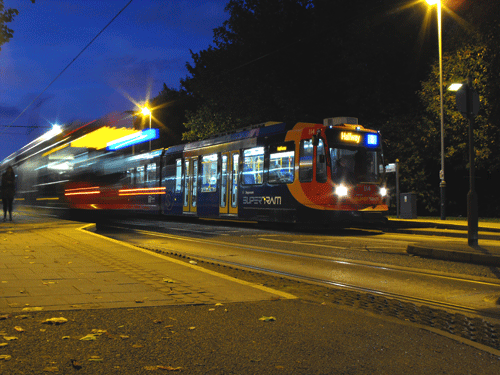
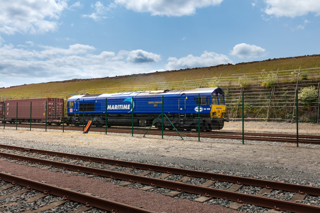
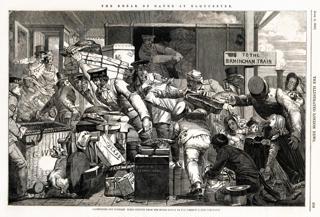
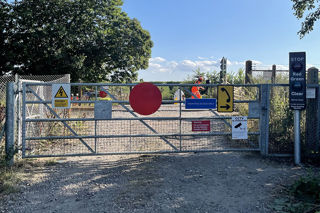
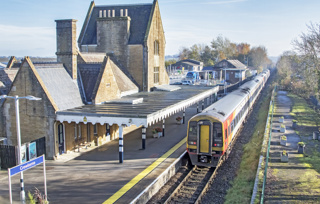
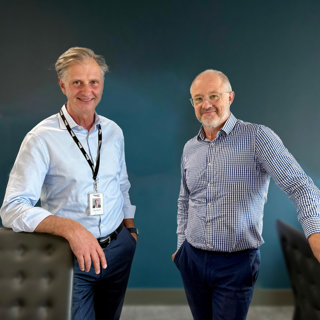

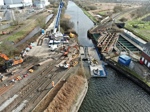









Login to comment
Comments
No comments have been made yet.